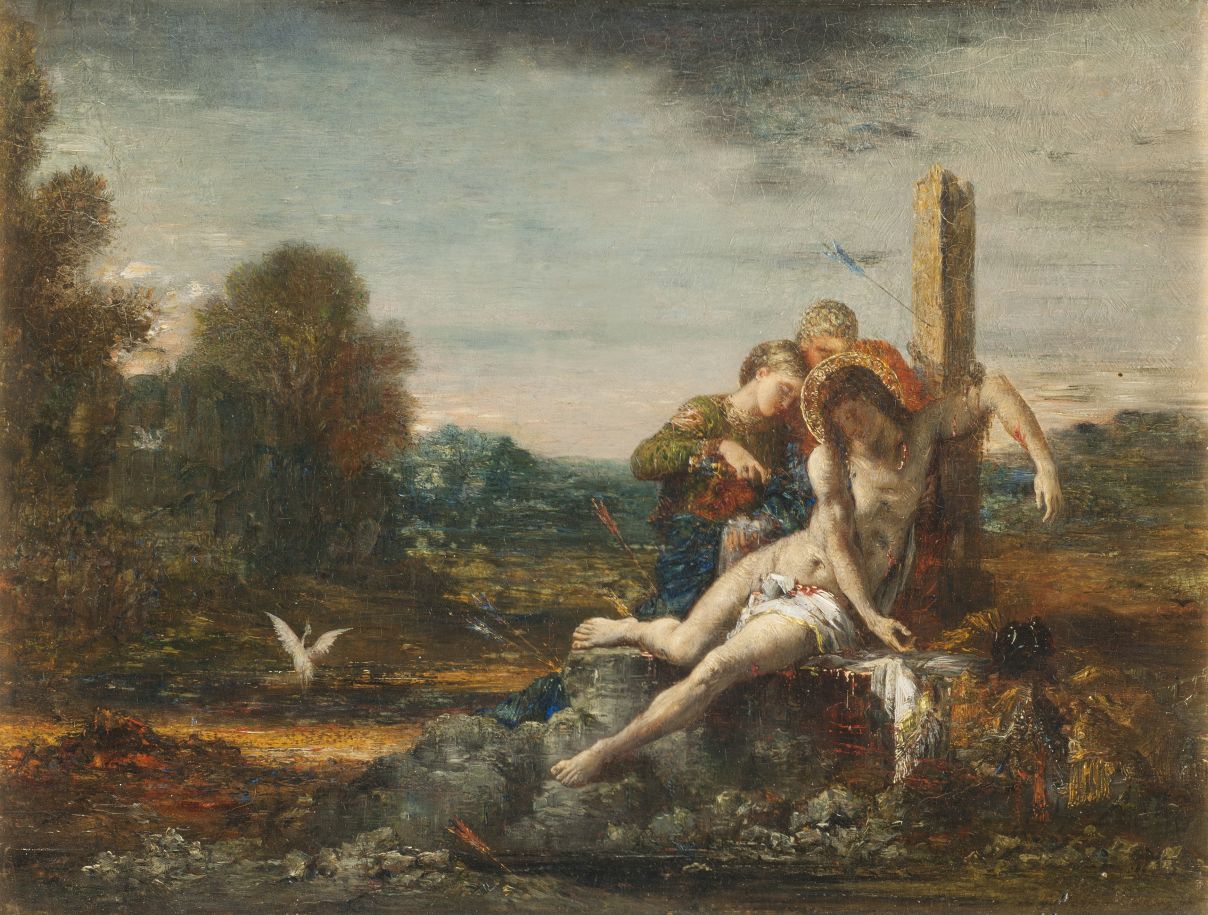
Foto: Carsten Gliese
Gustave Moreau (1826 – 1898)
Gustave Moreau occupies a unique position in art history as the “father of Symbolism.” The Clemens Sels Museum Neuss is the only museum in Germany to own four of his works. The painting “Saint Sebastian” is an example of the religious works that Moreau painstakingly prepared based on numerous studies. It underscores the human drama with a choice of colors that emphasizes the narrative; the red color at the stake and the stony plateau is an expression of the martyr’s torments. “Pietà” is far freer and is remarkable in its treatment of color. The adjoining fields appear positively abstract, combining to produce a picture in which much is only hinted at. Color and form do not produce a likeness of reality, but the artist’s inner vision. The two watercolors “The Sphinx” and “Evening” exhibit this innovative use of color in exemplary fashion. The depiction of the sphinx again shows Moreau’s ability to use vivid coloration to make the ancient Greek myth come alive. In the allegorical work “Evening” he creates a tension-filled color harmony from the primaries red, blue and yellow. Moreau’s special quality is in evidence here in the way he fuses poetic themes and precise visions of the appearance of the color. The late watercolors show how much the artist had broken away from academic painting to become a trailblazer of a new form of coloration based on personal perception.